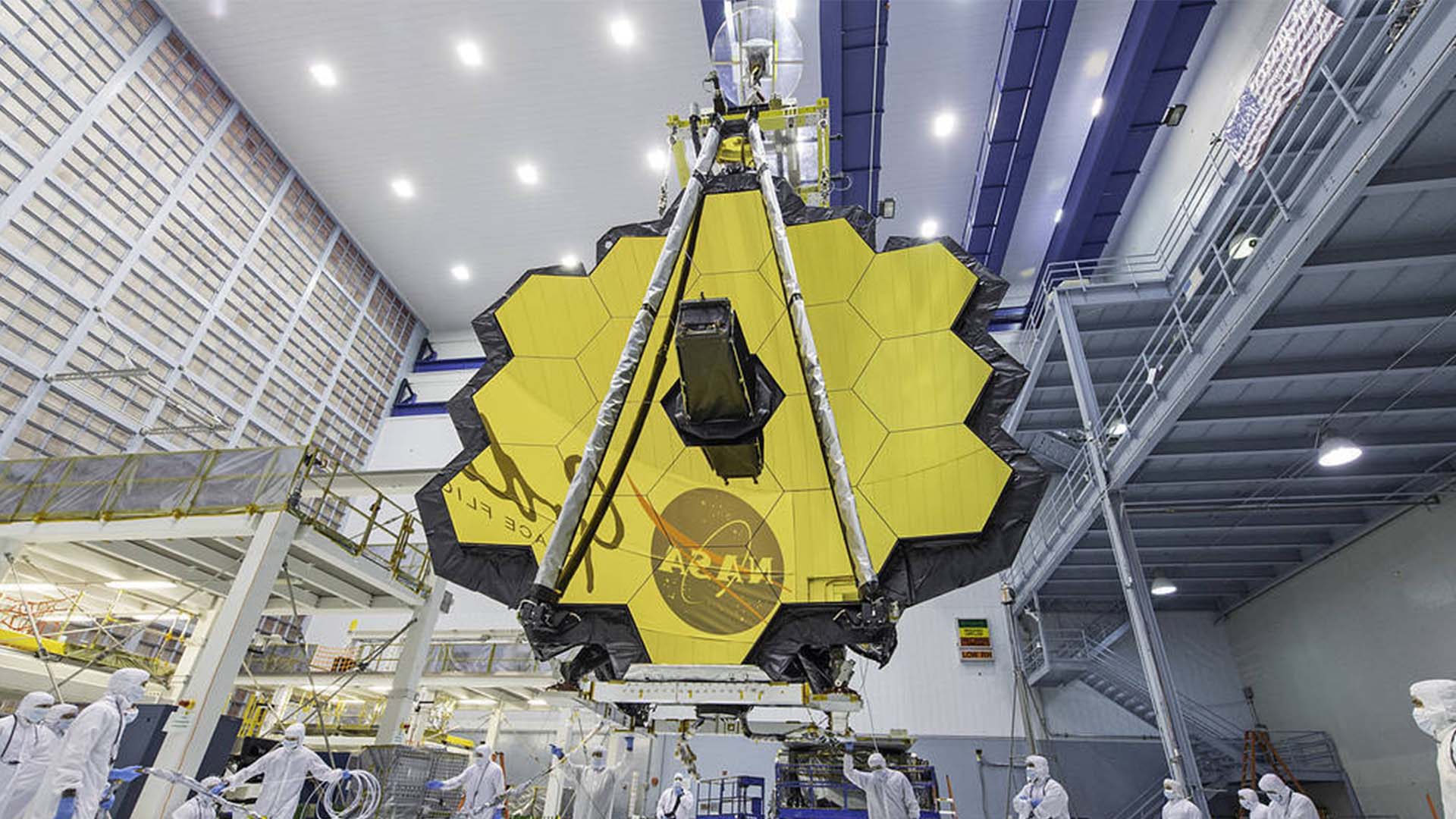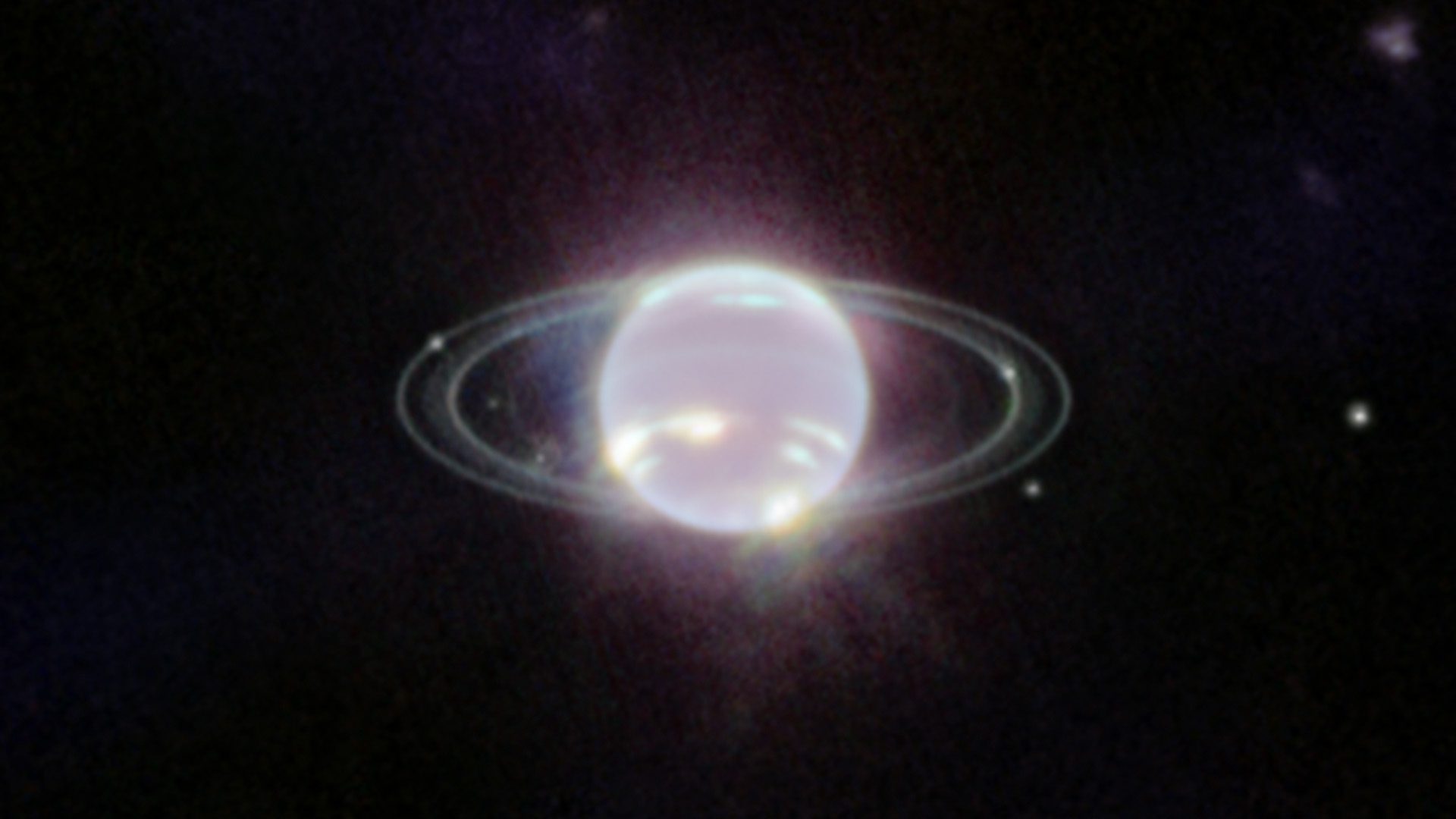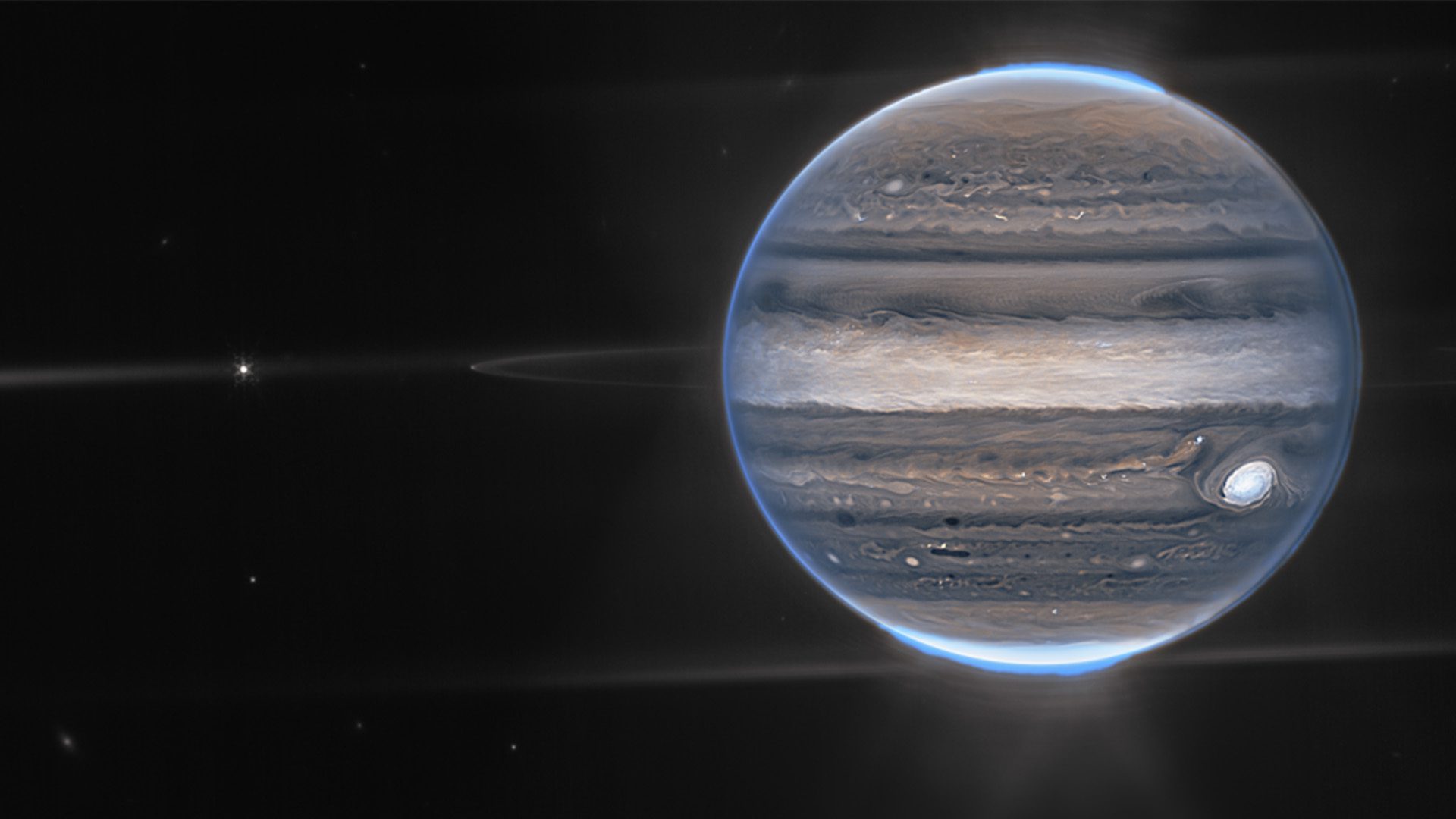Ever since the James Webb Space Telescope launched into space in December 2022, the infrared observatory has captured some of the most stunning images of space that the world has ever seen.
1. Carina Nebula

This awe-inspiring image of the Carina Nebula was one of the first full-color images that NASA released from the James Webb Telescope in July 2022. This nebula is a cloud of gas and dust that gives birth to new stars. One of the largest and brightest nebulae in the sky, this nebula is a cloud of gas and dust that contains a variety of stars at different stages of formation. Some of its stars are several times larger than the Sun. Webb’s new view gives us a rare peek into stars in their earliest, rapid stages of formation.
2. Pandora’s Cluster

Pandora’s Cluster, located around 3.5 billion light-years away, is a giant galaxy cluster that has resulted from the simultaneous pile-up of multiple galaxies. Thanks to Webb’s powerful infrared instruments, it can pick up on the cluster’s powerful gravitational lens. This allows the distant galaxies in the early universe to be observed by using the cluster like a magnifying glass. Astronomers estimate that the image represents 50,000 sources of near-infrared light.
3. Neptune and Its Rings

Released in October 2022, this is the clearest view of Neptune and its rings seen in decades. Some of these rings have not been detected since 1989, and some have never been seen at all. The image, captured with Webb’s Near-Infrared Camera (NIRCam), depicts the planet’s bright rings and fainter dust bands. The dust bands appear as fuzzy particles in between the brighter, ice-dominated rings.
4. Pillars of Creation

These vast clouds of gas and dust were first photographed and made famous by the Hubble Space Telescope in 1995. In October 2022, the James Webb Space Telescope revealed the pillars with more detail and clarity, bringing to light hundreds of previously invisible stars. This new view of the Pillars of Creation will begin to build a clearer understanding of how stars form and burst out of the clouds over millions of years.
5. NGC 346

This dazzling image is of NGC 346, a star-forming region located in a dwarf galaxy called the Small Magellanic Cloud that neighbors our Milky Way. By observing stars that are still forming, researchers can compare the star formation process in the Small Magellanic Cloud with the Milky Way’s. Data from Webb revealed many new pockets of star formation that have never been seen, such as detecting dust in the disks around the stars.
6. Tarantula Nebula
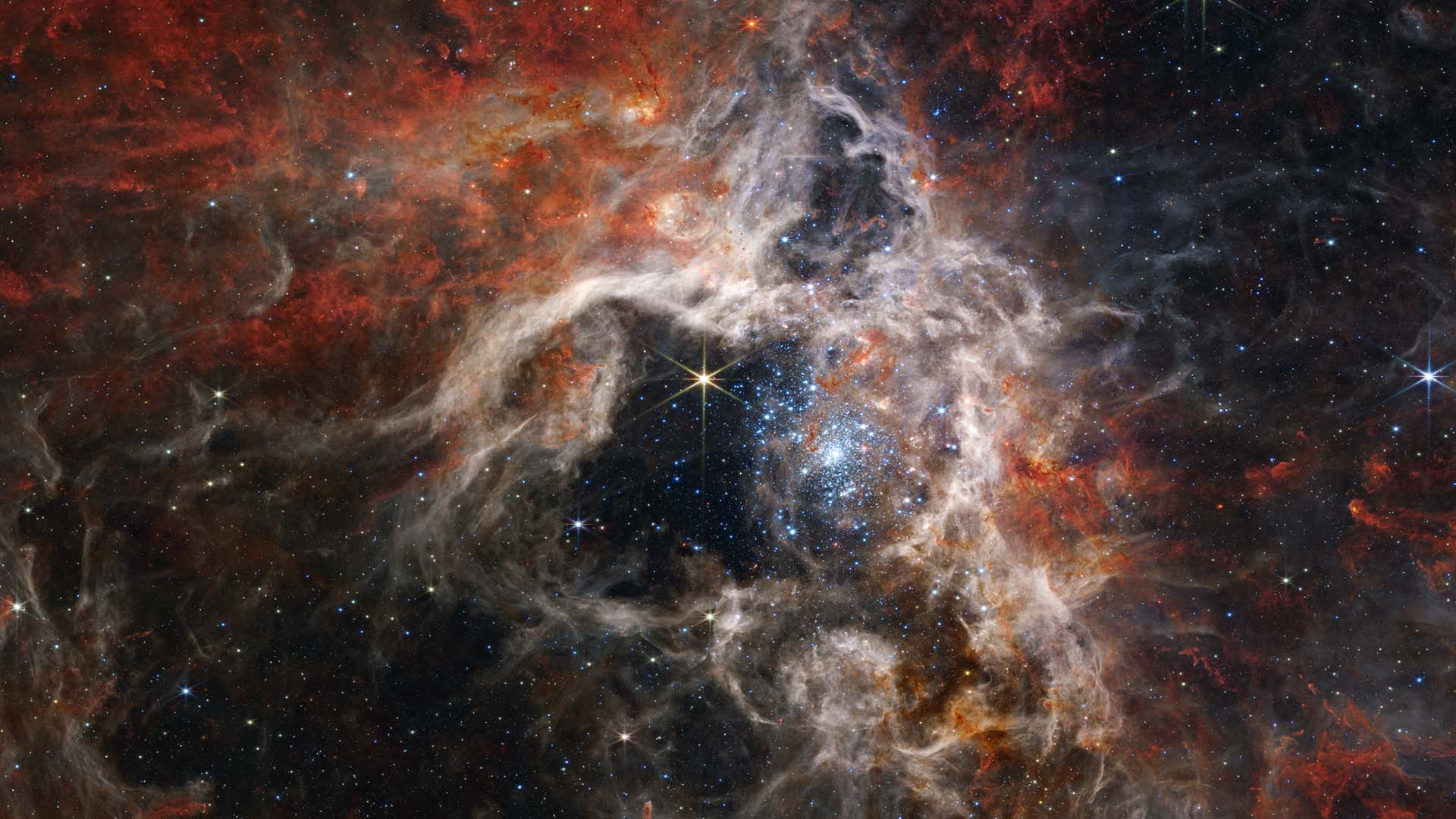
This striking image captures never-before-seen young stars in the Tarantula Nebula. Located about 161,000 light-years away, the Tarantula Nebula has a similar chemical composition to star-forming regions from the relatively early universe. This makes the Tarantula the closest example of what was happening in the universe as it reached its cosmic noon, which was when the cosmos was only a few billion years old and star formation was at its peak.
7. Phantom Galaxy
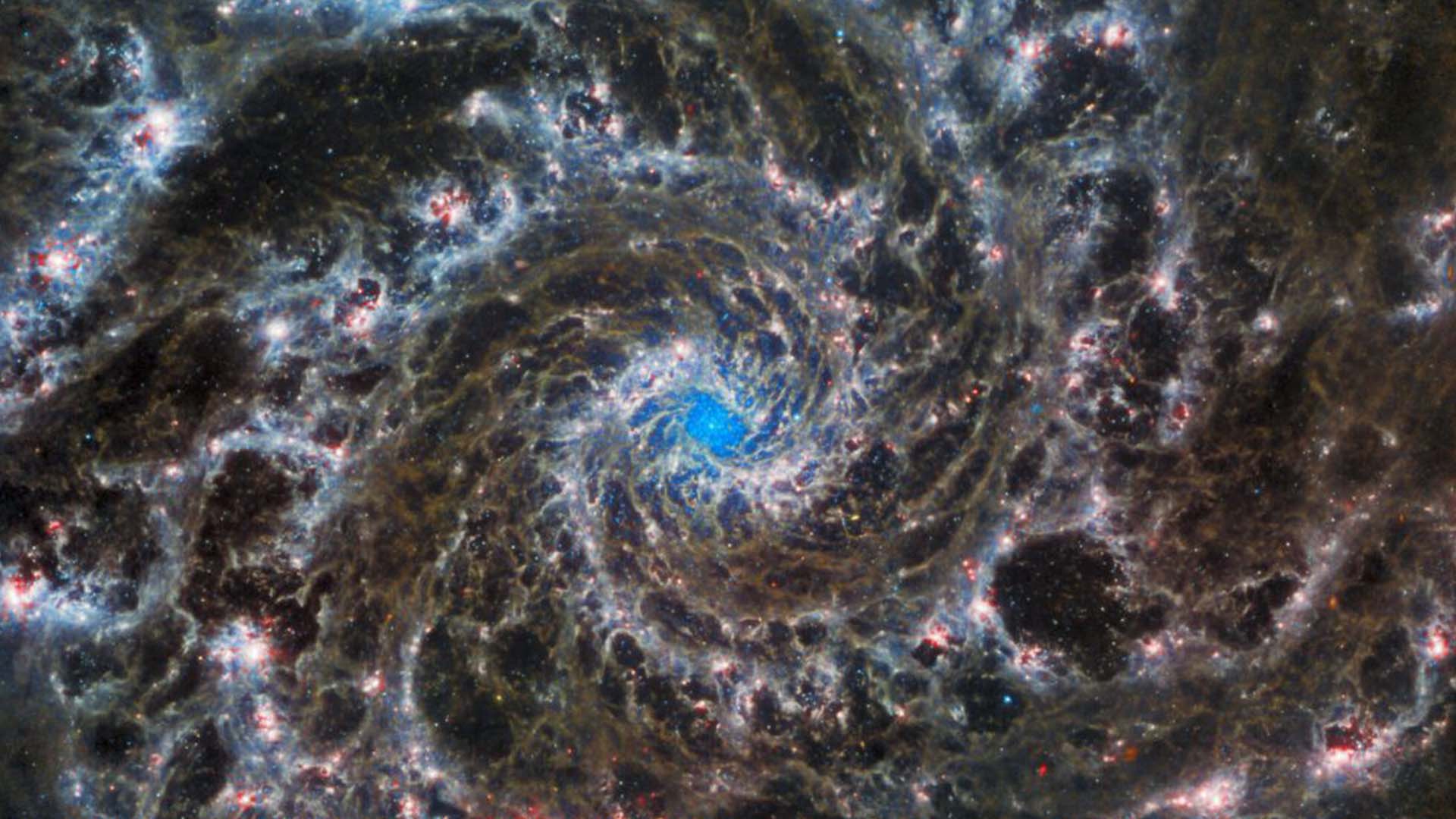
The Phantom Galaxy, formally known as NGC 628 or Messier 74, is dubbed the “perfect spiral” by some astronomers because the galaxy is so symmetrical. Webb’s sharp vision reveals delicate filaments of gas and dust in the well-defined spiral arms. This image will aid astronomers in the larger effort to accurately chart 19 nearby star-forming galaxies in the infrared.



